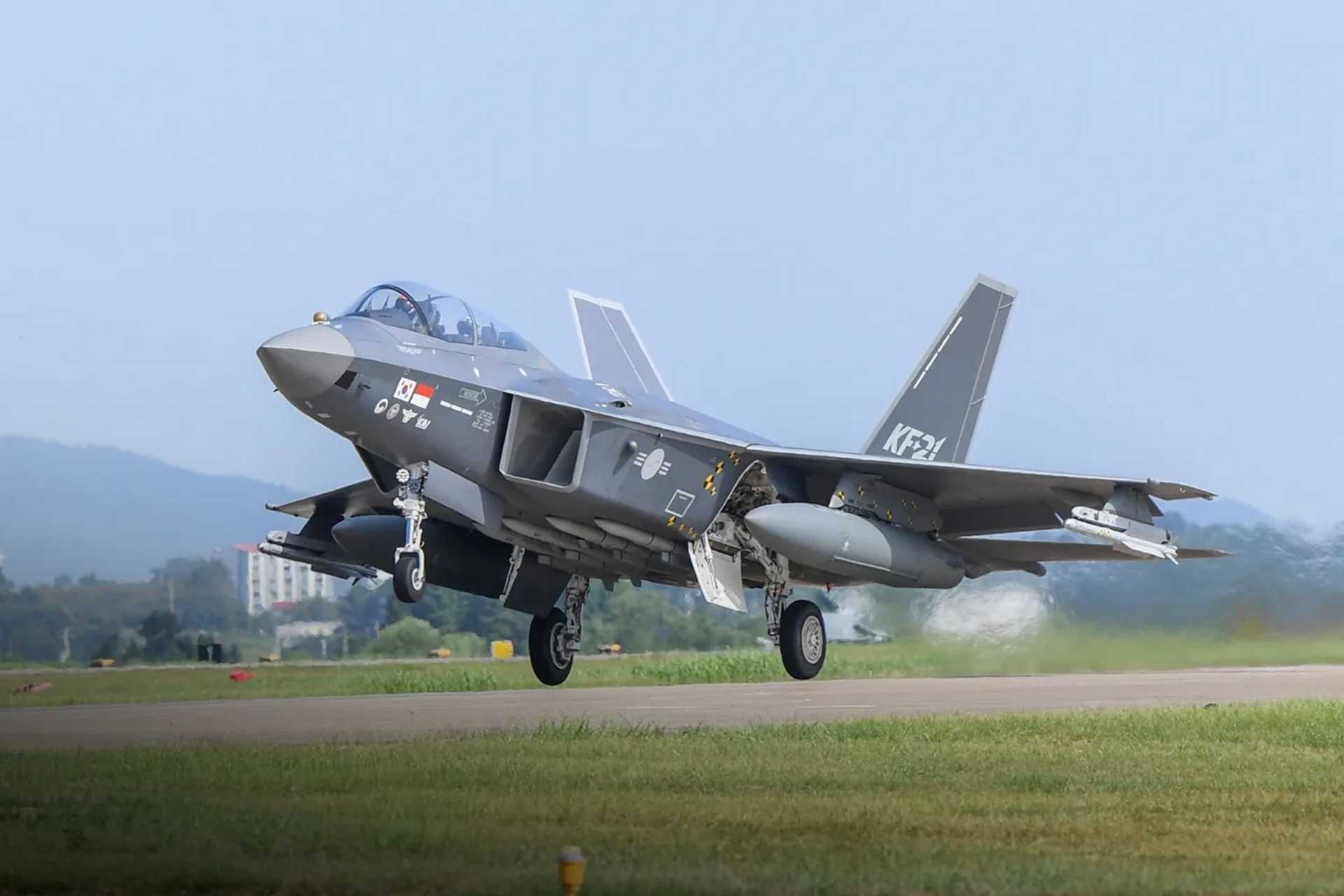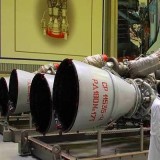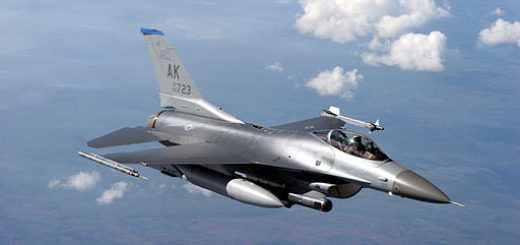Is the UAE preparing to purchase the South Korean KF-21 Boramae fighter jet for its Air Force?

{loadposition bannertop}
{loadposition sidebarpub}
As reported by Yonhap on April 15, 2025, the United Arab Emirates and South Korea held a joint air defense exercise on Emirati territory involving the South Korean Cheongung-II medium-range surface-to-air missile system. The activity marks the first publicly confirmed instance of operational integration of this system in a Middle Eastern setting. Discussions are ongoing regarding a potential UAE acquisition of the KF-21 Boramae multirole fighter, indicating a broader defense cooperation agenda between the two countries.Follow Army Recognition on Google News at this link
Simulation exercises conducted by the South Korean Air Force in late 2024 showed that the KF-21 matched or exceeded the performance of upgraded F-16s in beyond-visual-range combat scenarios. (Picture source: ROKAF)
The joint air defense exercise, held in early 2025 in a classified location in the UAE, was the first publicly known instance of a South Korean missile system being operated as part of a multilateral regional air defense setup in the Middle East. Officials from South Korea’s Defense Acquisition Program Administration (DAPA) confirmed that the drill involved real-time coordination between Emirati command centers and the Cheongung-II systems delivered in 2023 under a $3.5 billion contract signed in January 2022. These exercises reportedly included scenarios simulating cruise missile and tactical ballistic missile threats, further validating the system’s ability to operate in desert conditions and integrate with UAE’s layered air defense architecture.
This cooperation builds on sustained political and strategic engagement between Abu Dhabi and Seoul over the past decade. In January 2023, South Korean President Yoon Suk-yeol conducted a state visit to the UAE and announced $30 billion in investments, with defense named as a key pillar of the relationship. South Korea has supplied a range of systems to the UAE in recent years, including K9 self-propelled howitzers and possibly ISR-related technology. The Cheongung-II is the most prominent example of this collaboration and, according to South Korean defense officials, serves as a strategic test case for future Middle Eastern deployments. Military attachés from both sides have held recurring meetings to discuss extended training cycles, operational adaptation, and potential export follow-ups.
Looking ahead, South Korea and the UAE are discussing multiple avenues for continued defense cooperation. The most prominent of these is the UAE’s expressed interest in the KF-21 Boramae fighter jet. As of early 2025, Korean Aerospace Industries (KAI) and South Korean officials have presented a comprehensive package including technology transfers, training programs, and regional maintenance infrastructure. For the UAE, the KF-21 represents a potential alternative or complement to Western fighters, particularly amid growing delays and restrictions associated with U.S. and European systems. For South Korea, the UAE is both a strategic export market and a platform to raise the global profile of its high-tech defense sector in a competitive region.
The Cheongung-II, or KM-SAM Block-II, is a domestically developed South Korean medium-range air defense system designed to intercept aircraft, cruise missiles, and ballistic missiles. It emerged from a cooperation program between South Korea’s Agency for Defense Development (ADD), LIG Nex1, Hanwha Systems, and Russian defense firms, particularly drawing from the 9M96 missile used in the S-350E and S-400. The Cheongung-II system is equipped with vertical launch canisters and an active radar homing interceptor capable of engaging targets at up to 40 kilometers and altitudes reaching 20 kilometers. Each battery typically includes a multifunction AESA radar, a mobile engagement control center, and four launchers, each carrying eight interceptors.
Technologically, the Cheongung-II employs a hit-to-kill mechanism and is optimized for rapid target reacquisition. The radar system uses X-band AESA arrays for fire control, enabling simultaneous engagement of multiple targets in a 360-degree radius. During the UAE exercise, the radar and control system were tested under high-temperature, low-humidity conditions to evaluate reliability. Reports from UAE-based observers indicate that the system was operated autonomously and linked to the UAE’s broader missile defense network, which includes THAAD and Patriot PAC-3 batteries. This test of interoperability is significant given that the Cheongung-II fills the gap between short-range MANPADS and long-range exoatmospheric interceptors, making it well-suited for countries facing layered aerial threats.
A major advantage for prospective buyers is the KF-21’s open architecture, which allows integration of local weapons and systems. (Picture source: ROKAF)
The Cheongung-II’s 2022 contract with the UAE marked the largest-ever arms deal signed by South Korea at the time, valued at approximately 4.1 trillion KRW ($3.5 billion USD). Deliveries began in 2023, and the first full deployment was confirmed in early 2024. South Korea’s defense export strategy includes offering long-term maintenance, localized training, and joint R&D components. As a result, the Cheongung-II has been seen as a model for South Korea’s goal of becoming one of the top five global arms exporters. Other countries reportedly expressing interest include Poland, Saudi Arabia, and Egypt. Additionally, a longer-range variant and integration with radar surveillance aircraft are being developed, which could further expand its regional and global appeal.
The KF-21 Boramae is South Korea’s flagship fighter development program, launched officially in December 2015 with the goal of producing a multirole combat aircraft that bridges fourth- and fifth-generation technologies. Developed by Korea Aerospace Industries (KAI) with partial funding and joint development from Indonesia, the KF-21 is designed to replace aging F-4 and F-5 aircraft in the Republic of Korea Air Force (ROKAF). The first prototype flew in July 2022, and by mid-2024, six prototypes had completed more than 250 sorties. The program passed its Initial Operational Capability (IOC) phase and is scheduled for limited series production starting in 2026, with full-rate production by 2028.
From an export perspective, the KF-21 is aimed at countries seeking advanced capabilities without the political and logistical restrictions tied to Western fifth-generation jets. Its cost, estimated at $65 million per unit, is lower than that of the F-35 while offering significant flexibility in mission profile and software customization. In addition to the UAE, potential customers include Poland, the Philippines, Egypt, and Colombia. A major advantage for prospective buyers is the KF-21’s open architecture, which allows integration of local weapons and systems. Indonesia is expected to receive 50 aircraft under the initial development agreement, although funding disputes remain partially unresolved as of early 2025.
The KF-21 features an active electronically scanned array (AESA) radar developed by Hanwha Systems, electro-optical targeting and tracking systems, and electronic warfare suites. Its maximum speed is Mach 1.81 with a combat radius of over 1,000 km. The aircraft is expected to carry both U.S.- and European-made weapons such as the AIM-120 AMRAAM, IRIS-T, and the MBDA Meteor, as well as Korean-developed JDAMs and cruise missiles. Block-I aircraft will carry weapons externally, while the Block-II variant, due post-2028, is expected to include internal bays and stealth-optimized shaping. Simulation exercises conducted by the ROKAF in late 2024 showed that the KF-21 matched or exceeded the performance of upgraded F-16s in beyond-visual-range combat scenarios.

{loadposition bannertop}
{loadposition sidebarpub}
As reported by Yonhap on April 15, 2025, the United Arab Emirates and South Korea held a joint air defense exercise on Emirati territory involving the South Korean Cheongung-II medium-range surface-to-air missile system. The activity marks the first publicly confirmed instance of operational integration of this system in a Middle Eastern setting. Discussions are ongoing regarding a potential UAE acquisition of the KF-21 Boramae multirole fighter, indicating a broader defense cooperation agenda between the two countries.
Follow Army Recognition on Google News at this link
Simulation exercises conducted by the South Korean Air Force in late 2024 showed that the KF-21 matched or exceeded the performance of upgraded F-16s in beyond-visual-range combat scenarios. (Picture source: ROKAF)
The joint air defense exercise, held in early 2025 in a classified location in the UAE, was the first publicly known instance of a South Korean missile system being operated as part of a multilateral regional air defense setup in the Middle East. Officials from South Korea’s Defense Acquisition Program Administration (DAPA) confirmed that the drill involved real-time coordination between Emirati command centers and the Cheongung-II systems delivered in 2023 under a $3.5 billion contract signed in January 2022. These exercises reportedly included scenarios simulating cruise missile and tactical ballistic missile threats, further validating the system’s ability to operate in desert conditions and integrate with UAE’s layered air defense architecture.
This cooperation builds on sustained political and strategic engagement between Abu Dhabi and Seoul over the past decade. In January 2023, South Korean President Yoon Suk-yeol conducted a state visit to the UAE and announced $30 billion in investments, with defense named as a key pillar of the relationship. South Korea has supplied a range of systems to the UAE in recent years, including K9 self-propelled howitzers and possibly ISR-related technology. The Cheongung-II is the most prominent example of this collaboration and, according to South Korean defense officials, serves as a strategic test case for future Middle Eastern deployments. Military attachés from both sides have held recurring meetings to discuss extended training cycles, operational adaptation, and potential export follow-ups.
Looking ahead, South Korea and the UAE are discussing multiple avenues for continued defense cooperation. The most prominent of these is the UAE’s expressed interest in the KF-21 Boramae fighter jet. As of early 2025, Korean Aerospace Industries (KAI) and South Korean officials have presented a comprehensive package including technology transfers, training programs, and regional maintenance infrastructure. For the UAE, the KF-21 represents a potential alternative or complement to Western fighters, particularly amid growing delays and restrictions associated with U.S. and European systems. For South Korea, the UAE is both a strategic export market and a platform to raise the global profile of its high-tech defense sector in a competitive region.
The Cheongung-II, or KM-SAM Block-II, is a domestically developed South Korean medium-range air defense system designed to intercept aircraft, cruise missiles, and ballistic missiles. It emerged from a cooperation program between South Korea’s Agency for Defense Development (ADD), LIG Nex1, Hanwha Systems, and Russian defense firms, particularly drawing from the 9M96 missile used in the S-350E and S-400. The Cheongung-II system is equipped with vertical launch canisters and an active radar homing interceptor capable of engaging targets at up to 40 kilometers and altitudes reaching 20 kilometers. Each battery typically includes a multifunction AESA radar, a mobile engagement control center, and four launchers, each carrying eight interceptors.
Technologically, the Cheongung-II employs a hit-to-kill mechanism and is optimized for rapid target reacquisition. The radar system uses X-band AESA arrays for fire control, enabling simultaneous engagement of multiple targets in a 360-degree radius. During the UAE exercise, the radar and control system were tested under high-temperature, low-humidity conditions to evaluate reliability. Reports from UAE-based observers indicate that the system was operated autonomously and linked to the UAE’s broader missile defense network, which includes THAAD and Patriot PAC-3 batteries. This test of interoperability is significant given that the Cheongung-II fills the gap between short-range MANPADS and long-range exoatmospheric interceptors, making it well-suited for countries facing layered aerial threats.

A major advantage for prospective buyers is the KF-21’s open architecture, which allows integration of local weapons and systems. (Picture source: ROKAF)
The Cheongung-II’s 2022 contract with the UAE marked the largest-ever arms deal signed by South Korea at the time, valued at approximately 4.1 trillion KRW ($3.5 billion USD). Deliveries began in 2023, and the first full deployment was confirmed in early 2024. South Korea’s defense export strategy includes offering long-term maintenance, localized training, and joint R&D components. As a result, the Cheongung-II has been seen as a model for South Korea’s goal of becoming one of the top five global arms exporters. Other countries reportedly expressing interest include Poland, Saudi Arabia, and Egypt. Additionally, a longer-range variant and integration with radar surveillance aircraft are being developed, which could further expand its regional and global appeal.
The KF-21 Boramae is South Korea’s flagship fighter development program, launched officially in December 2015 with the goal of producing a multirole combat aircraft that bridges fourth- and fifth-generation technologies. Developed by Korea Aerospace Industries (KAI) with partial funding and joint development from Indonesia, the KF-21 is designed to replace aging F-4 and F-5 aircraft in the Republic of Korea Air Force (ROKAF). The first prototype flew in July 2022, and by mid-2024, six prototypes had completed more than 250 sorties. The program passed its Initial Operational Capability (IOC) phase and is scheduled for limited series production starting in 2026, with full-rate production by 2028.
From an export perspective, the KF-21 is aimed at countries seeking advanced capabilities without the political and logistical restrictions tied to Western fifth-generation jets. Its cost, estimated at $65 million per unit, is lower than that of the F-35 while offering significant flexibility in mission profile and software customization. In addition to the UAE, potential customers include Poland, the Philippines, Egypt, and Colombia. A major advantage for prospective buyers is the KF-21’s open architecture, which allows integration of local weapons and systems. Indonesia is expected to receive 50 aircraft under the initial development agreement, although funding disputes remain partially unresolved as of early 2025.
The KF-21 features an active electronically scanned array (AESA) radar developed by Hanwha Systems, electro-optical targeting and tracking systems, and electronic warfare suites. Its maximum speed is Mach 1.81 with a combat radius of over 1,000 km. The aircraft is expected to carry both U.S.- and European-made weapons such as the AIM-120 AMRAAM, IRIS-T, and the MBDA Meteor, as well as Korean-developed JDAMs and cruise missiles. Block-I aircraft will carry weapons externally, while the Block-II variant, due post-2028, is expected to include internal bays and stealth-optimized shaping. Simulation exercises conducted by the ROKAF in late 2024 showed that the KF-21 matched or exceeded the performance of upgraded F-16s in beyond-visual-range combat scenarios.





